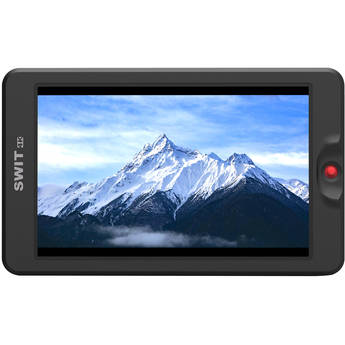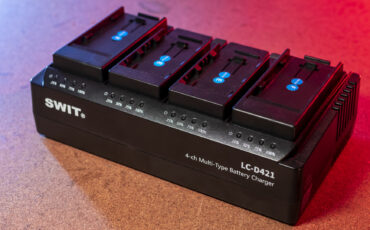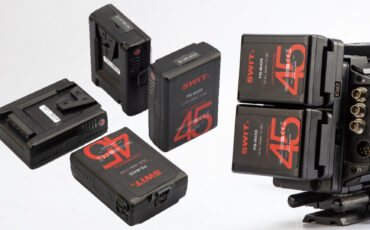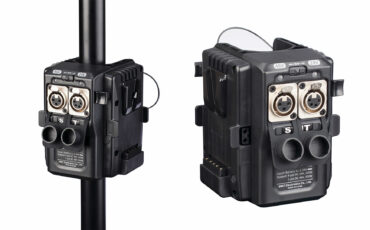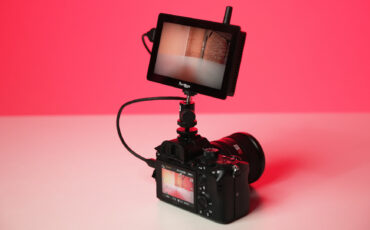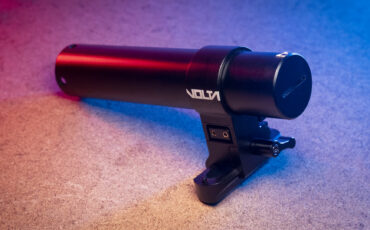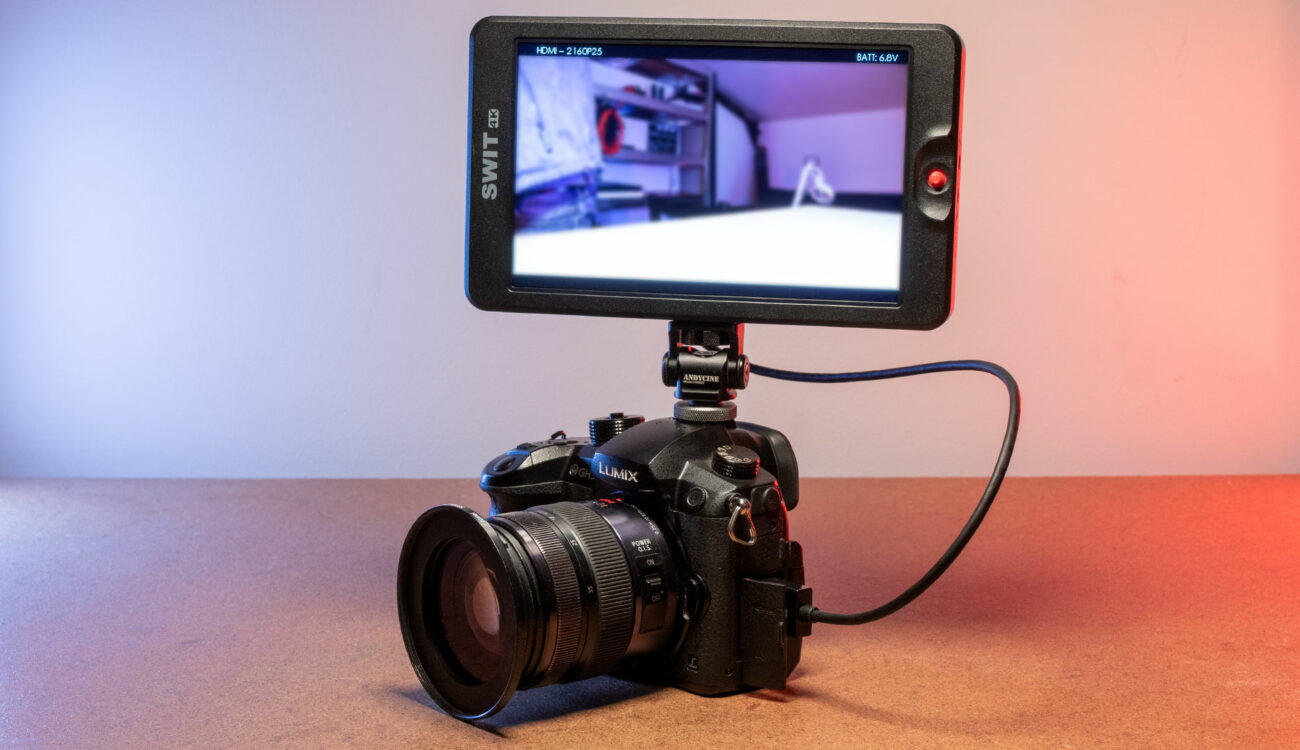
The SWIT CM-S75F is a 7″ IPS LCD monitor with PQ/HLG HDR monitoring capabilities that came out in October 2019. This 3000nits monitor features HDMI and SDI inputs, and HDMI and SDI output ports (but without any cross-conversion). The monitor can take resolutions up to 4K DCI via its HDMI port and 2K on the SDI input port. Let’s take a closer look at this monitor to see if it holds all its promises!
SWIT is a Chinese company specialized in creating batteries, wireless video systems, lights, and monitors. We already reported about their SWIT 45Wh pocket V-Mount batteries, the SWIT SL-100P waterproof flexible bi-color LED light, their FLOW500 wireless video system, and I already reviewed the SWIT LC-D421 four-channel battery charger that you can read here.
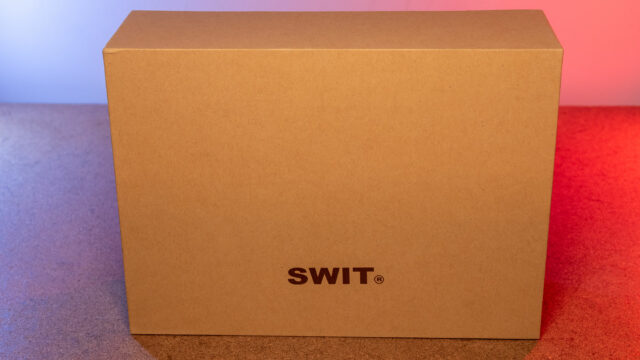
SWIT is mainly known for making quality products that offer filmmakers an excellent price/features ratio. The SWIT CM-S75F came out in October 2019 and is one of the company’s high-end on-camera monitors. A HDMI-only version – the CM-S75C – with similar features is also available if you don’t need the SDI input/output ports.
Unboxing the SWIT CM-S75F
The SWIT CM-S75F comes in a small box. When you open it, you’ll find:
Directing Color
- The CM-S75F monitor
- An AC-adaptor with various plugs
- One USB stick with the manual inside
- A cold shoe to 1/4 “-20 ball head
- One HEX key with a 1/4″ -20 threaded insert
- One D-Tap to 5.5mm DC barrel power cable
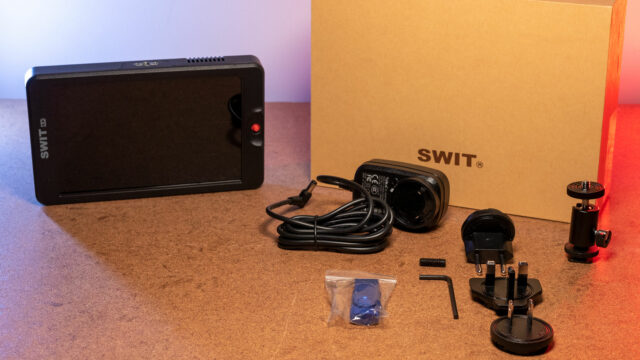
This is the “Basic package,” but a “Pro package” is also available with an additional carrying case, a V-mount plate, a sun hood, and a magic arm.
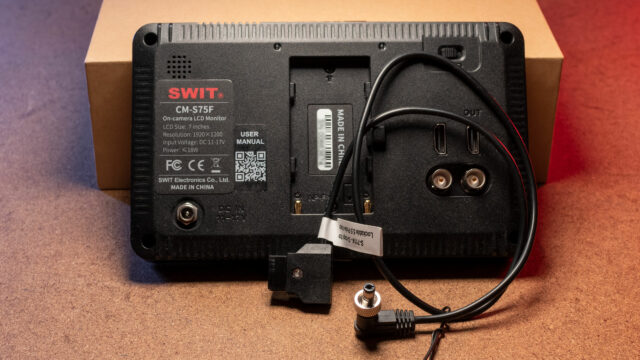
In short, you’re pretty much ready-to-go out of the box; you simply need to add a Sony NP-F battery (or V-Mount battery) at the back of the monitor, plug your HDMI/SDI cable, and of you go.
Design, size and weight
The exterior design of the SWIT CM-S75F is not groundbreaking; it’s simple and quite minimalist. The design reminds me of the SmallHD 501/502/701/702 that I also have and consider one of the best on-camera designs ever.
Now let’s take a quick tour of the monitor:
- Front: the IPS LCD display and a joystick to navigate inside the menus and control the monitor.
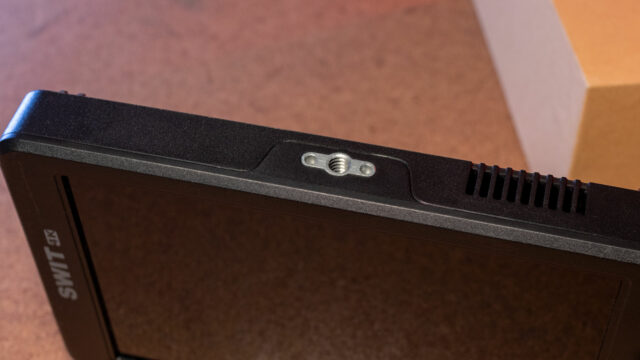
- Top: an exhaust vent and a 1/4”-20 with ARRI locating pins mounting point.
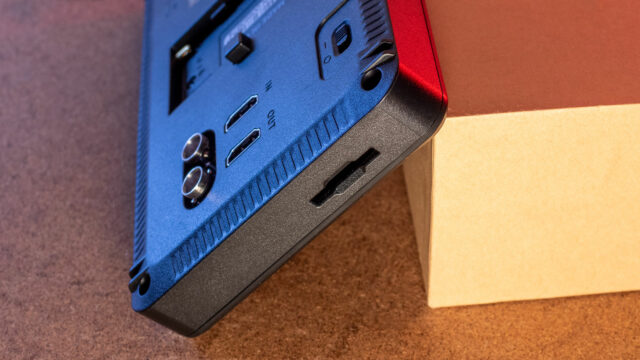
- Left side: an SD card slot.
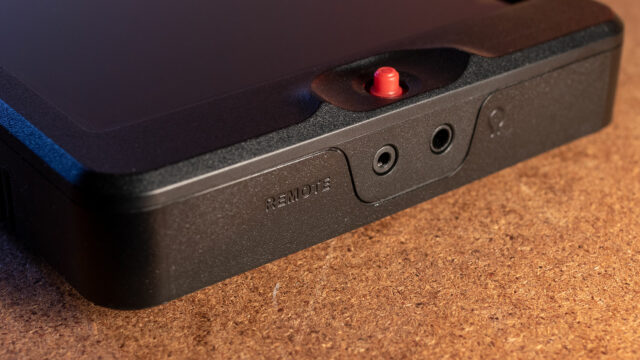
- Right side: a 3.5mm headphone jack and a 2.5mm remote port.
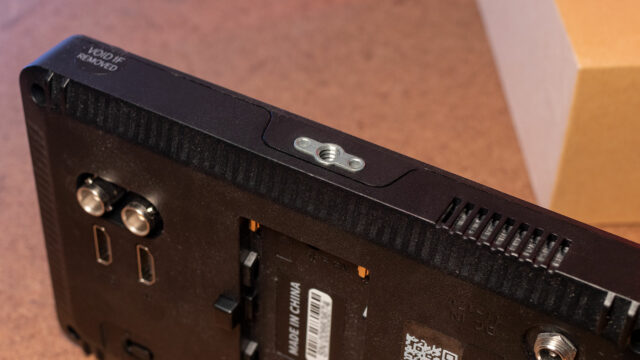
- Bottom: another exhaust vent and a 1/4”-20 with ARRI locating pins mounting point.
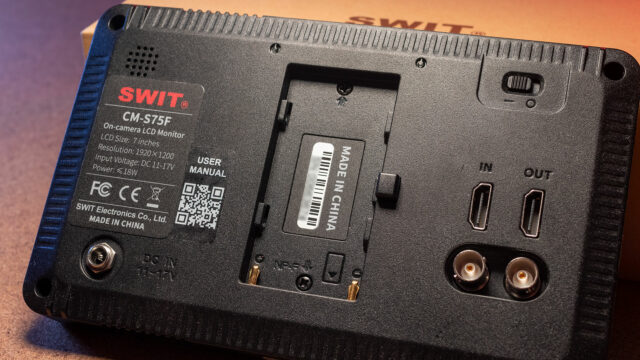
- Back: an On/Off switch, a small speaker, a DC 11-17V 5.5mm locking barrel input to power the monitor, a Sony NP-F battery plate with a battery plate lock button, one HDMI input, one HDMI output ports, and two SDI ports.
In terms of weight, the monitor is 450 grams/15.8oz without batteries. External dimensions are 192×116, 3×24, 7mm/7.5×4.5×1 in without battery. Comparing the CM-S75F to some of its competitors like the Smallhd Focus 7, the latter is lighter at 368 grams/13.6oz. Also, the FOCUS 7 is higher and thicker but less large, with dimensions of 6.9×4.7×1.1in.
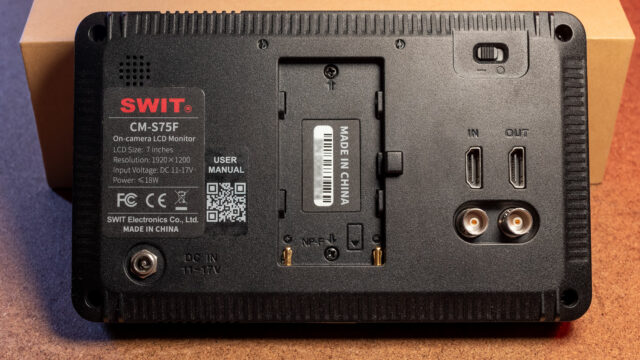
Build quality and mounting points
The SWIT CM-S75F is entirely made out of hard plastic. The plastic does not feel cheap, but keep in mind that 450 grams/15.8oz is relatively heavy for an on-camera monitor. The feeling and quality of the joystick seems decent; it’s not clicky.
The Sony NP-F style battery plate at the back of the monitor is okay, too. Tolerances are proper, the battery slides in/out without problems, and it sits in place perfectly. There are no problems here.
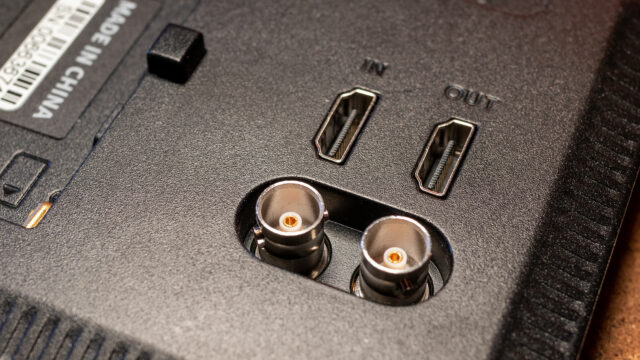
The quality of the HDMI/SDI input and output ports is fine too. However, the SDI connectors are a bit recessed in the plastic housing to protect them, I guess. I found that it can be a bit tricky to lock your SDI cable in place with gloves, for example. I think the connectors could have protruded a couple of millimeters more to make locking/unlocking cables easier for the operator.
As I mentioned previously, the SWIT CM-S75F has two 1/4-20″ mounting points at the top and bottom. I like to have multiple options for rigging a monitor to my camera, at least one on the left or right side and one at the bottom. There is nothing but the SD card slot on the left side of the monitor, so I think it would also have been possible to add another mounting point here, and that doesn’t just apply specifically to this monitor.
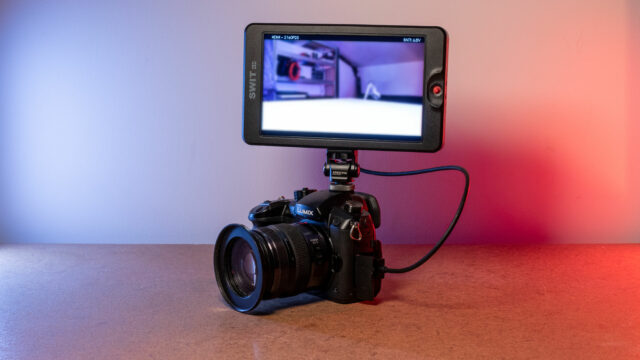
However, something I still don’t understand is why manufacturers only put 1/4-20″ mounting points on their products. The mounting points of the SWIT CM-S75F do offer ARRI locating pins, but they are not “industry standard”. Indeed, monitors mounting accessories that feature ARRI locating pins are 3/8″ -16.
I’ll say it again, but to me, Atomos did it right with the Ninja V: there is one 3/8-16″ mounting point at the bottom with ARRI locating pins. If you use a 3/8-16″ monitor mount with ARRI locating pins, your monitor won’t go anywhere or twist. If someone wants to attach their monitor to a 1/4-20″ mounting accessory, all you have to do is put a 3/8-16″ to 1/4-20″ threaded insert. Simply put, this is something that can be done easily and would make any filmmaker happy.
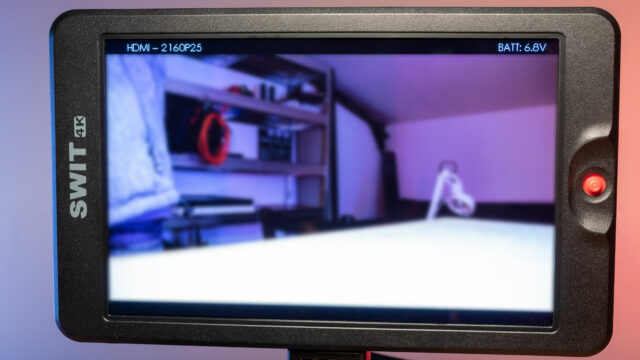
SWIT CM-S75F input and output ports
On the SWIT CM-S75F, there is one HDMI input port, one HDMI output port, one SDI input, and one SDI output port. If you use the HDMI ports, the monitor supports a maximum input resolution of DCI 4K at 24p, 4K UHD at up to 30p, and FullHD at up to 60p. If you go the SDI route, the maximum resolution is 2K at 60/59.94/50 frames per second.
However, and this is something very important, but the SWIT CM-S75F doesn’t do any cross-conversion. This means that you cannot input an HDMI signal and output an SDI video out. The same goes for the other way around. It would have been great and made the monitor a much more versatile option if it supported cross-conversion, but it doesn’t.
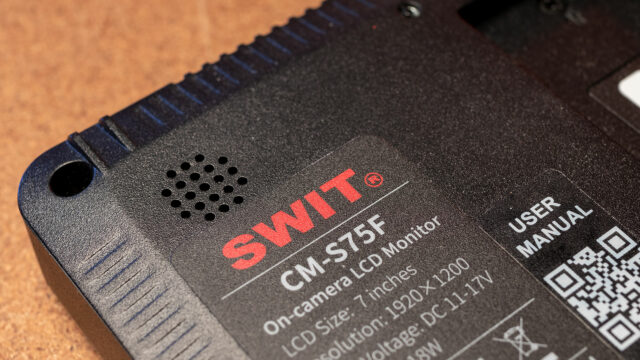
The other output is the 3.5mm headphone jack – even if the monitor has a small built-in speaker, and if your camera doesn’t have one, or if you want to monitor your signal directly, which works fine.
Finally, there is a 2.5mm remote input port, but I did not try it, and to be honest, I don’t know what it is for. I guess very few filmmakers would use/need it.
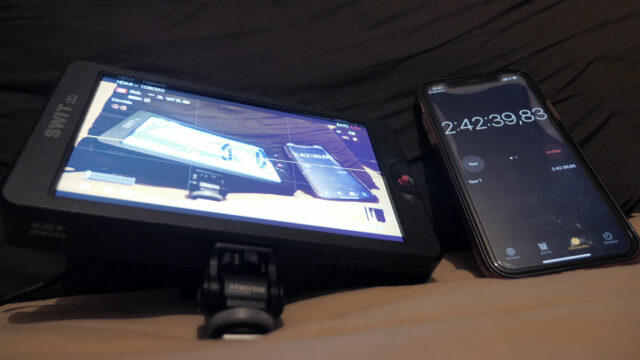
Powering options
As I already mentioned, there is a built-in Sony NP-F style battery plate at the back of the monitor. I did a quick battery life test with a Sony NP-F970 battery at maximum brightness (3000nits) with only the HDMI input plugged in. I got away with around two hours and forty minutes of battery life. These theoretical tests don’t make much sense to me, as you usually don’t shoot at full brightness for a long amount of time without switching off the monitor, but it gives you a rough idea. In “normal” real-life shooting conditions, I found the battery life to be pretty good.
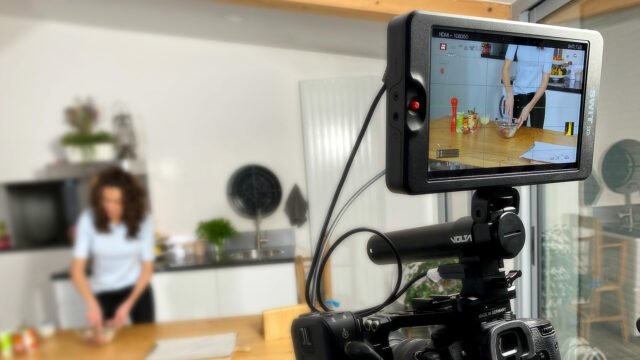
Also, I did the same battery life test with the Volta battery handle that I also reviewed here. One Volta36 battery is 36Wh/5A, and I got around four hours of battery life at minimum brightness.
Finally, I tried the monitor running out of a 45Wh V-Mount battery with the included D-Tap to barrel power cable, that comes with the monitor. I got around 5 hours of continuous run time. In the end, we can say that this monitor is not power-hungry at all.
Fan
The SWIT CM-S75F does have a built-in fan. To be honest, if you literally put your ear on the air intake, you can hear it spinning, but that’s it. It doesn’t make any noise and won’t be picked up by any microphone. There is no fan adjustment settings in the menu, and I understand why SWIT didn’t do so, because there is no need to tweak it.
During my battery life testing and on set, the monitor got a little bit warm to the touch, but nothing that had me worried. Good job here.
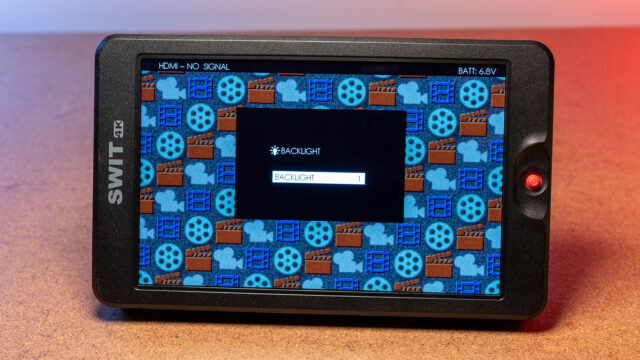
Display, boot-up time and main menu
The SWIT CM-S75F features a 7″ LCD with a FullHD 1080p / 1920 x 1200 resolution. The display is not a touchscreen.
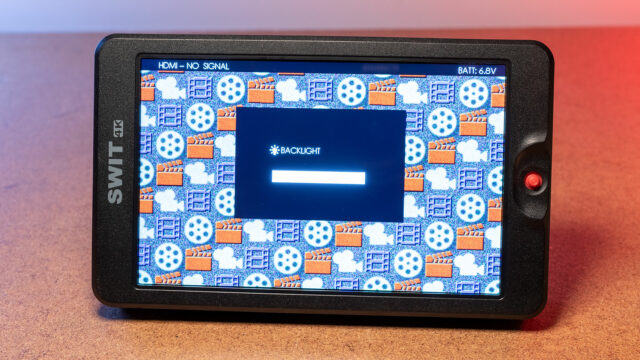
The CM-S75F has a claimed maximum brightness of 3000nits, which is like any monitor with a brightness over 1500nit, perfectly daylight-viewable. The monitor has a contrast ratio of 1200:1, and the panel itself is 8-bit “only.” Also, SWIT claims that the CM-S75F features “PQ/HLG HDR monitoring,” but I had no way to confirm nor test this feature.
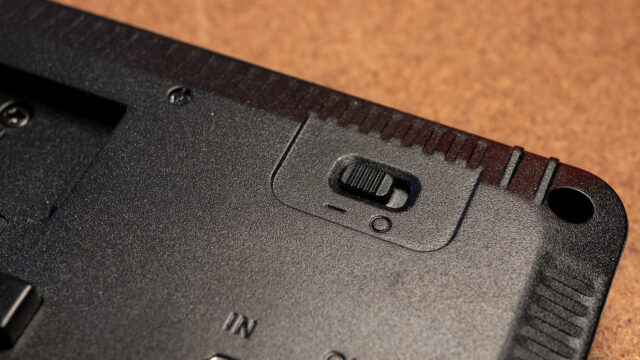
Once you switch the monitor on via the dedicated button on the back, the monitor needs about 10 seconds to boot up and be operational.
When the monitor is switched on, you can adjust various display settings inside the menu by turning the joystick to the left for 3 seconds. Here is what you’ll find inside the main menu:
- Input selection: HDMI or SDI. As the monitor doesn’t support cross-conversion, there is no “output” control.
- The volume of the headphones
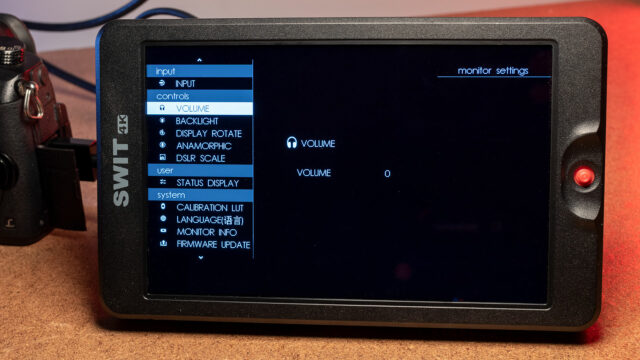
- Backlight from 1 to 10.
- Display rotation
- Anamorphic de-squeeze (1X, 1.33X, 1.5X, 1.66X, 2X, 2XMAG)
- DSLR scale for Canon 5D Mark II/7D users.
- Calibration LUT to adjust the color temperature, gamma, brightness/saturation, and input level (video/full). You can also “enter calibration channel” to tweak the settings further.
- Load a LUT file from the SD card.
As you can see, there are plenty of adjustment options inside the menu. To navigate inside the main menu, you use the joystick, which is straightforward. The UI of the menu is very similar to SmallHD monitors, but we’ll talk about that in a moment.
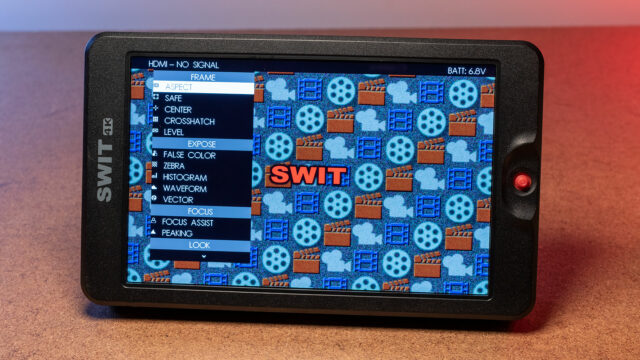
SWIT CM-S75F monitoring tools
A good monitor is nothing without great monitoring tools. These tools allow you to judge your exposure, focus, white balance, and so on. This is useful so you can make creative decisions and adjust your camera settings. On the SWIT CM-S75F, here are the built-in tools that you access by clicking the joystick:
- Aspect, Safe Markers, Center, Crosshatch, Level (built-in gyroscope)
- Zoom, Focus Assist, Peaking, Image re-sizing
- False Color, Zebra, Histogram, Waveform, Vectorscop
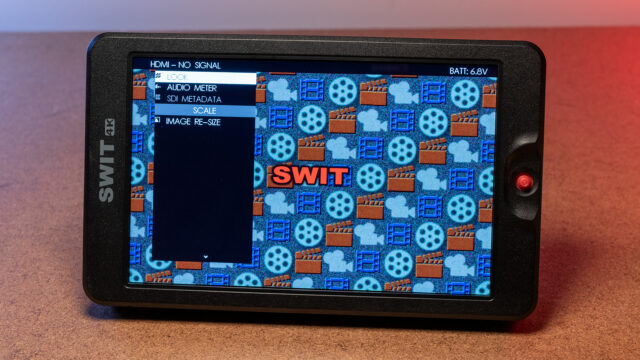
- 3D LUT
- Audio Meters
- SDI metadata
These tools are pretty standard nowadays on on-camera monitors, but nothing is missing on the CM-S75F. This is one of the first times I’ve seen a built-in level inside a monitor. I don’t know if it’s beneficial, but it’s cool to have.
Inside each monitoring tool, you can adjust various settings like the intensity/opacity for framing/focusing tools. For exposition tools, you can adjust the position/scale of each instrument on the screen, and also, something important is how you want these tools to be displayed. For example, you can set the Waveform to Luma, RGB, or Parade modes, which is crucial and often missing in some monitors. To me, it’s perfect and nothing is missing.
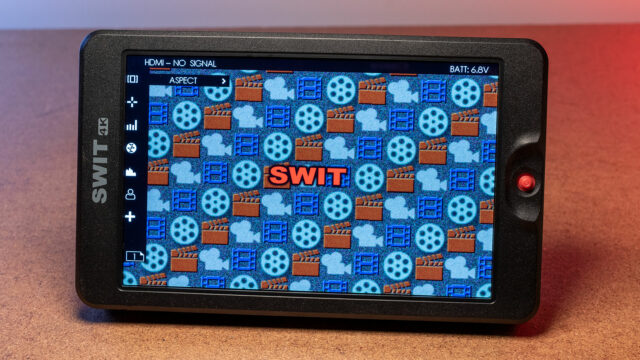
User interface
The user interface of the SWIT CM-S75F is simple to understand and easy to use. To be honest, if you have ever used a SmallHD 501/502/701/702, you’ll feel at home immediately, as it is pretty similar.
As I already mentioned, all the navigation is done via the red joystick next to the screen. Here is how you navigate with the joystick:
Up: Quick zoom-in mode
Down: Quick backlight adjustment
Long down: Delete current scene
Left/right: Preset scenes switching
Long left: Enter menu system
Long right: Add a new scene
Press down: Edit tools shortcuts / confirm settings
The pages/scenes are where you store your favorite monitoring tools. You can set as many pages as you want, and you can put up to 8 monitoring tools per page. To access the tools inside each page, you have to click the joystick and pick the tool you want to activate/disable by clicking it.
You got it; the UI is simple to understand and navigate. You don’t need to read a book to use it.
SWIT CM-S75F image quality
Having tremendous and accurate monitoring tools to evaluate what you’re shooting is excellent, but the image quality of a monitor is more crucial. Not all monitors are created equally, and the quality of the display behind them may vary significantly.
Indeed, a great on-camera monitor must be as color accurate as possible and be as close to “what you see is what you get” as possible. If your monitor colors are not correct, you won’t see your footage the way it’s supposed to be. For example, when a monitor’s colors are wildly inaccurate, you can see orange when you’re supposed to see yellow or red. It can affect how you set your camera’s white balance or exposure, for example.
However, on-camera monitors are not your traditional computer display. Most of the time, you can’t use a probe or spectrophotometer to adjust your on-camera monitor. It means that you’ll have a hard time trying to calibrate it correctly by hand with only a few built-in picture adjustment tools at your disposal in the menu system. In short, on-camera monitors must be as good as possible out of the box with minimal color adjustments needed by the end-user.
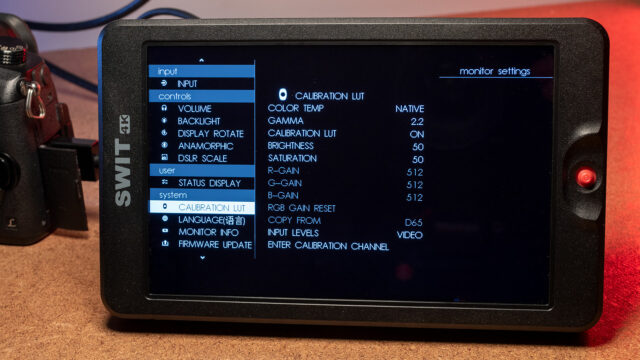
Judging the brightness, color accuracy, or Delta E of the SWIT CM-S75F with a spectrophotometer did not make a lot of sense. Indeed, numbers are just what they are: numbers. I prefer to judge a product by its feeling and the overall perception of an image.
The CM-S75F display is color calibrated by SWIT out of the factory. The monitor is in-factory calibrated using a colorimeter. In short, it should be pretty color accurate out of the box. And, to be fair, it felt like one of the most color-accurate on-camera monitors I’ve ever used. At minimum brightness (set to 1), it’s perfectly viewable indoor, colors are not off, and the contrast felt right.
Like most on-camera monitors, and especially daylight-viewable ones, if you crank up the brightness, the display tends to lift the black parts of the image. In short, blacks are not black anymore, but more on the grey side, and the picture starts to be a little washed out. The SWIT CM-S75F at maximum brightness is exceptionally bright, even outdoor. Of course, if you put it at the full brightness, you’ll lose a lot of contrast, especially as it is an LCD display. But, the image is perfectly viewable even in bright sunlight.
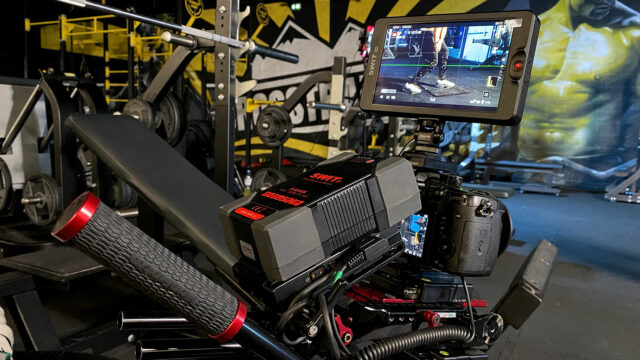
Real-life use
I used the CM-S75F for a couple of months, and for a dozen shoots in various shooting conditions before writing this review. I did not have any issue with the monitor itself; everything went smoothly. Now, as I mentioned earlier, I’m not a massive fan of 7” on-camera monitor for run and gun situations. However, I used it during a 10-day shoot where I was only filming on sticks. I have to admit that watching a 7” display for 8/10 hours a day is more comfortable than any camera’s built-in screen/EVF or even a 5” display.
In bright daylight conditions, the CM-S75F is perfectly usable at maximum brightness, but the battery life will not last very long, only around 2h30/2h40. Viewing angles are correct, but this is not a matte display, so it’s prone to sunlight reflections. However, you can see what you’re shooting, but – and this is not particular to that model but the same for all daylight-viewable monitors – I wouldn’t judge my exposure by just looking at the picture without any monitoring tools.
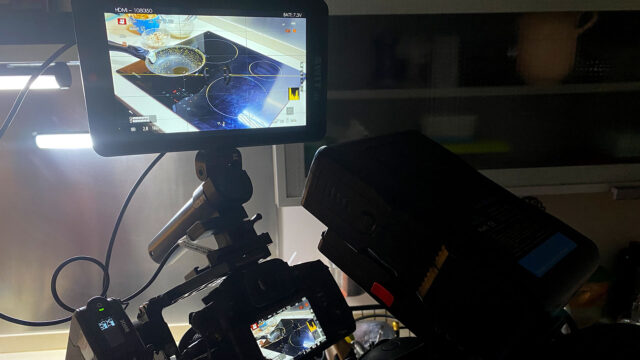
All in all, I had a pleasant time using the CM-S75F on set. The monitor is not the lightest out there, but the battery life is very decent for indoor shoots, so if you’re often shooting on sticks or you want to put it in a director’s cage, it would be an excellent product for that use. Some filmmakers like to shoot with 7” on-camera monitors instead of 5” models, so it could be an alternative too.
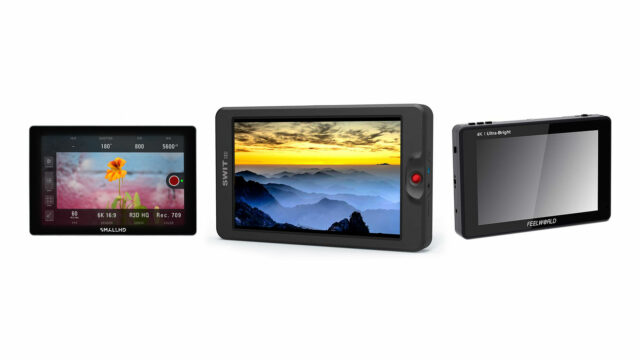
Comparison to other monitors
There are quite a few 7” on-camera monitors available on the market, at various price-point. I created this table to compare the SWIT CM-S75 to some of its competitors at different price points:
| SWIT CM-S75F | SmallHD INDIE 7 | FeelWorld LUT7S PRO | |
| Display Size | 7″ | 7″ | 7″ |
| Display Resolution | 1920 x 1200 | 1920 x 1200 | 1920 x 1200 |
| Maximum Brightness | 3000 nit | 1000 nit | 2200 nit |
| Contrast Ratio | 1200:1 | 1000:1 | 1200:1 |
| Display Technology | IPS LCD | IPS LCD | IPS LCD |
| Touchscreen | No | Yes | Yes |
| Bit-Depth | 8 bit | 10 bit (8+2 FRC) | N/A |
| HDMI Input | Yes : it supports signal up to DCI 4K (4096×2160) at 30fps, or HD video at up to 60fps. | Yes : it supports signal up to DCI 4K (4096×2160) at 30fps, or HD video up to 60fps. | Yes : it supports signal up to DCI 4K (4096×2160) at 24fps, or HD video at up to 60fps. |
| HDMI Output | Yes : similar to the input | Yes : similar to the input | Yes : similar to the input |
| SDI Input | Yes : it supports signal up to DCI 2K at 60fps | Yes : it supports signal up to 4K UHD at 30fps or HD video up to 60fps. | Yes : it supports signal up to 1080p at 60fps |
| SDI Output | Yes : similar to the input | Yes : similar to the input | Yes : similar to the input |
| Cross-Conversion | No | Yes : SDI to HDMI and HDMI to SDI | N/A |
| Headphone jack | Yes : 3.5mm. | Yes : 3.5mm. | Yes : 3.5mm. |
| 3D LUT support | Yes | Yes | Yes |
| Monitoring Tools | Yes | Yes | Yes |
| Mounting Points | 2 x 1/4″-20 with ARRI locating pins | 4 x 1/4″-20 with locating pins | 3 x 1/4″-20 without locating pins |
| Mounting bracket included | No, only a ballhead adapter is included | No | Yes |
| Powering | 1 x Sony NP-F Battery. An optional V-Mount battery plate is available. | 2 x Sony NP-F Battery. An optional V-Mount battery plate is available. | 1 x Sony NP-F Battery |
| Other powering options | Yes : 1 x 11-17V DC input port | Yes : 1 x 10-34V DC input port | Yes : 1 x 12V DC input port |
| Powering output | No | No | Yes: 8V DC output |
| Camera Control | No | Yes: RED Komodo optional kit. | No |
| Image calibration | Yes: in-factory calibrated. | N/A | No |
| Weight | 450 grams / 15.8oz | 737 grams / 26oz | 450 grams / 15.8oz |
| Size | 192 x 116,3 x 24,7mm | 180 x 118 x 33 mm | 190 x 126 x 27mm |
| Construction | Plastic | Aluminium | Plastic |
| Price | $899.00 | $899.00 | $379.99 |
As you can see, you can’t have the cake and eat it, too. The SWIT CM-S75F has its strengths compared to the SmallHD INDIE 7 and the FeelWorld LUT7S, so it’ll depend on your specific needs and budget.
Also, please keep in mind that these numbers are just what they are: numbers. It’s hard to judge the image quality of a display with just these data.
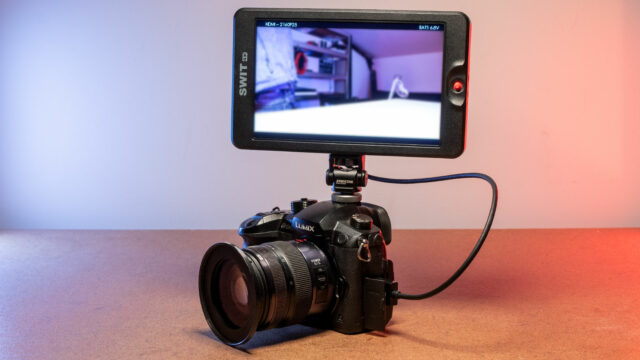
Price and availability
The SWIT CM-S75F retails for $899.00/€559, and it is available now.
Compared to other options on the market, and especially in this mid-high price range, the CM-S75F is a solid contender for filmmakers and content creators looking for a reliable, easy to use, daylight-viewable 7″ on-camera monitor. I guess if the USD price were a little lower, it would be a no-brainer, but it’s a very good price/quality ratio for European filmmakers.
For more information, please visit SWIT’s website here.
Did you like this review of the CM-S75F? Do you want us to do more camera monitor reviews? Do you think scientific tests might be helpful in this kind of reviews? What do you think about the SWIT CM-S75F? What monitor are you using as your primary on-camera monitor? Don’t hesitate to let us know in the comments below!
Disclaimer: I am not a SWIT Ambassador. Like with every other review on CineD, SWIT, or any other brand, did not pay us to write this article. However, the company sent us the product to review for free. This review is my unbiased opinion, as SWIT did not modify, influence, or input about this article before its publication.



